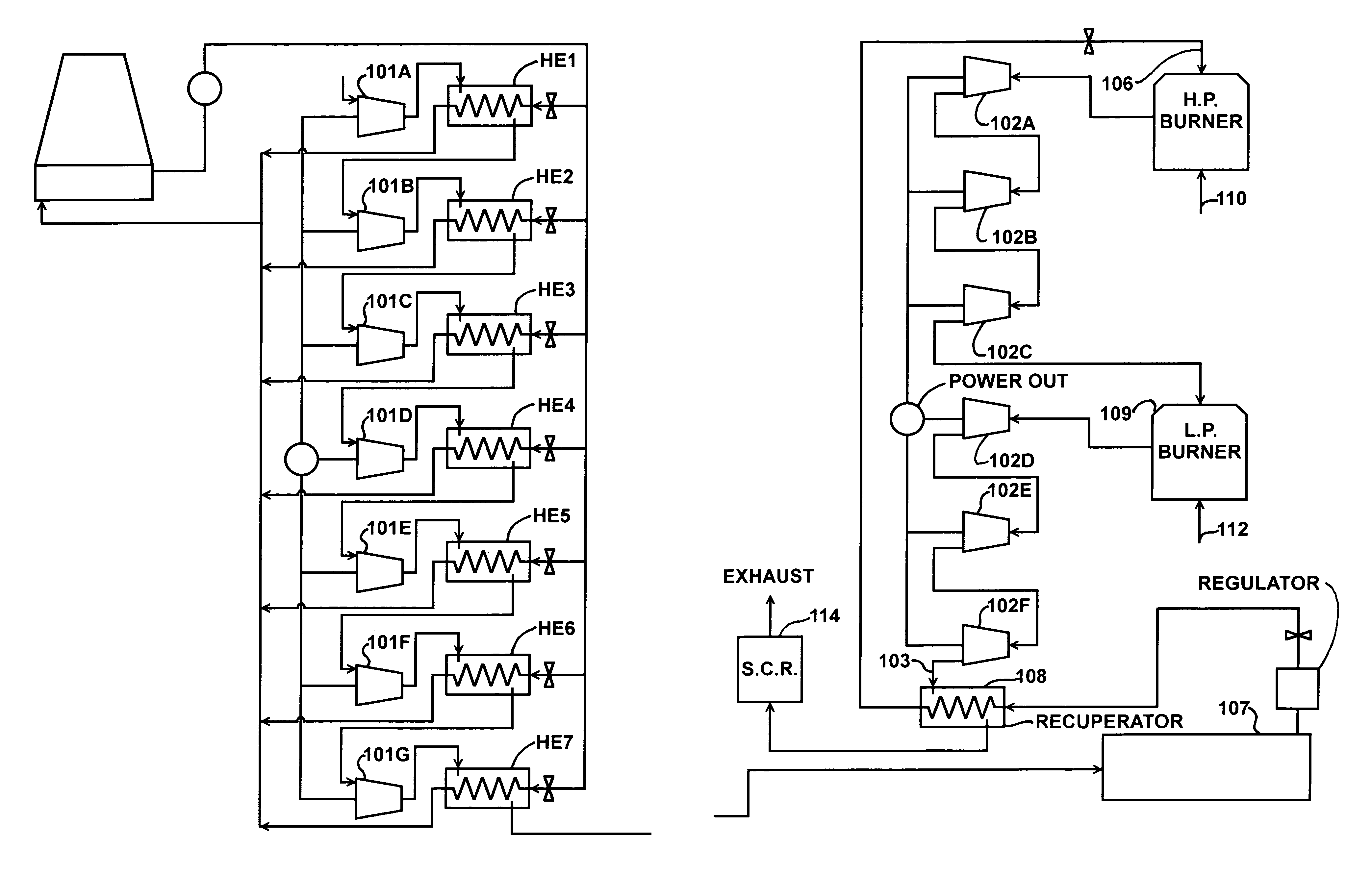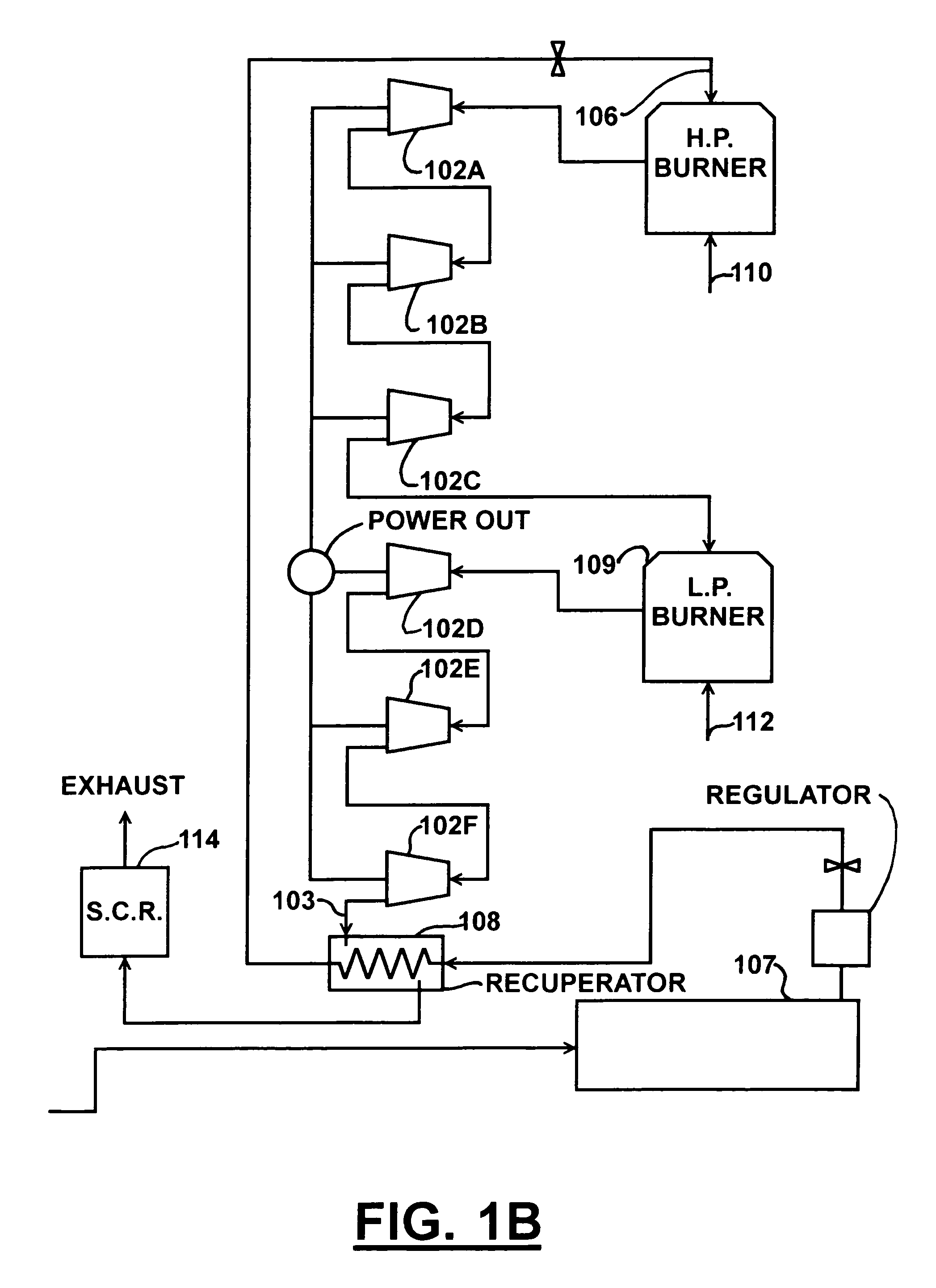High Output Modular CAES (HOMC)
a modular caese and high output technology, applied in the field of electric power generation capacity, can solve problems such as substantial obstacles, blackouts, and increased local electrical power generation capacity through gas turbines
- Summary
- Abstract
- Description
- Claims
- Application Information
AI Technical Summary
Benefits of technology
Problems solved by technology
Method used
Image
Examples
embodiment 1
[0114]A second alternate embodiment of the present invention is shown in FIG. 5 which is similar to the first alternate embodiment, except that in this embodiment 1) the gas turbine exhaust is ducted to an exhaust-gas-to-air heat exchanger instead of an exhaust-gas-to-water heat exchanger, 2) the expansion circuit is decoupled from the heat exchangers 3HE1, 3HE2, 3HE3, 3HE4, 3HE5, 3HE6, 3HE7 used in the compression circuit such that the compression circuit has its own manifolds 347, 348 and heat exchangers 3HE1, 3HE2, 3HE3, 3HE4, 3HE5, 3HE6, 3HE7, and the expansion circuit has its own manifolds 550, 551 and six air-to-air heat exchangers 5HE8, 5HE9, 5HE10, 5HE11, 5HE12, 5HE13, and one pre-heater heat exchanger 319. Since the heat exchangers used in the compression circuit use a liquid coolant, they cannot double as heat exchangers for the expansion circuit due to the differences in the heat transfer medium used. Accordingly, a separate bank of air-to-air heat exchangers (5HE8, 5HE9,...
second embodiment
[0115]The compression circuit of the second alternate embodiment of the present invention is the same as described for the preferred embodiment, and, except for the changes described with respect to the heating of the hot water described in the first alternate embodiment, the heat transfer fluid supply circuit is also the same. Likewise, the expansion circuit of the second alternate embodiment of the present invention is similar to that described for the preferred embodiment, but in the second alternate embodiment of the present invention, the eighth heat exchanger 3HE8 replaces the sixth heat exchanger 3HE6, the ninth heat exchanger 3HE9 replaces the fifth heat exchanger 3HE5, the tenth heat exchanger 5HE10 replaces the fourth heat exchanger 3HE4, the eleventh heat exchanger 5HE11 replaces the third heat exchanger 3HE3, the twelfth heat exchanger 5HE12 replaces the second heat exchanger 3HE2, and the thirteenth heat exchanger 5HE13 replaces the first heat exchanger 3HE1. Other than...
PUM
 Login to View More
Login to View More Abstract
Description
Claims
Application Information
 Login to View More
Login to View More - R&D
- Intellectual Property
- Life Sciences
- Materials
- Tech Scout
- Unparalleled Data Quality
- Higher Quality Content
- 60% Fewer Hallucinations
Browse by: Latest US Patents, China's latest patents, Technical Efficacy Thesaurus, Application Domain, Technology Topic, Popular Technical Reports.
© 2025 PatSnap. All rights reserved.Legal|Privacy policy|Modern Slavery Act Transparency Statement|Sitemap|About US| Contact US: help@patsnap.com



